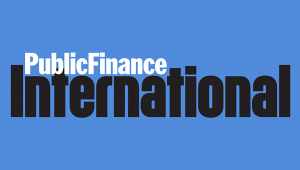Web-BusyBeijing_iStock_000046911174_Large.jpg

The slowdown of the Chinese economy is set to continue in 2016, CEBR forecasts. Photo iStock
The UK-based analysts today concluded that negative economic trends, including turbulence in financial markets, weak trade growth, falling oil prices and the slowdown of the Chinese economy, would continue over 2016.
As a result, the review urged against too much fiscal austerity in the short term given the weak state of the global economy.
Oil prices could even drop to $20 per barrel by the summer this year if the global economy continues to weaken, said Scott Corfe, a Cebr director at the launch of the World Economic League Table.
While the Cebr expects oil prices to average at around $30 per barrel over 2016, Corfe cautioned China could have a further negative influence. It would “continue to be a concern” throughout the year, and Cebr forecast the country may see just 4-5% growth, compared to official figures that anticipate around 7% growth.
However, he highlighted that much of China’s slowdown could be explained by the economy rebalancing away towards a more sustainable, consumer-led growth model. He anticipated the country’s government would increase spending if growth slows as fiscal policy was an available tool to policymakers.
For advanced economies the Cebr said 2016 should not see further reductions in government spending, apart from where debt or the deficit is very severe.
The review found that there could be room for some additional government spending in some economies. In particular, the review said Germany should risk a budget deficit in 2016 to stimulate the European Union’s economy rather than the €1.2bn surplus it ran last year.
Downside risks to global growth include Britain or Greece leaving the EU, unrest in the Middle East, premature interest rate rises and a further slowdown in Russia, which contracted by 3.7% in 2015 due to the effect of falling oil prices and sanctions.
However, the analysis also found that growth in Asia in particular is set to be very strong. It identified 39 “hothouse economies” that they anticipate will enjoy annual growth above 5% through to 2031, which consists of mainly developing nations across Africa, the Middle East and Asia.
Danae Kyriakopoulou, a senior economist at Cebr, highlighted that three countries on track for high growth in the long term are Israel, Iran and Sri Lanka. In Israel, a strong technology sector will boost growth, the end of international sanctions will boost Ira, while in Sri Lanka the economy is likely to catch up following the end of the country’s civil war.












